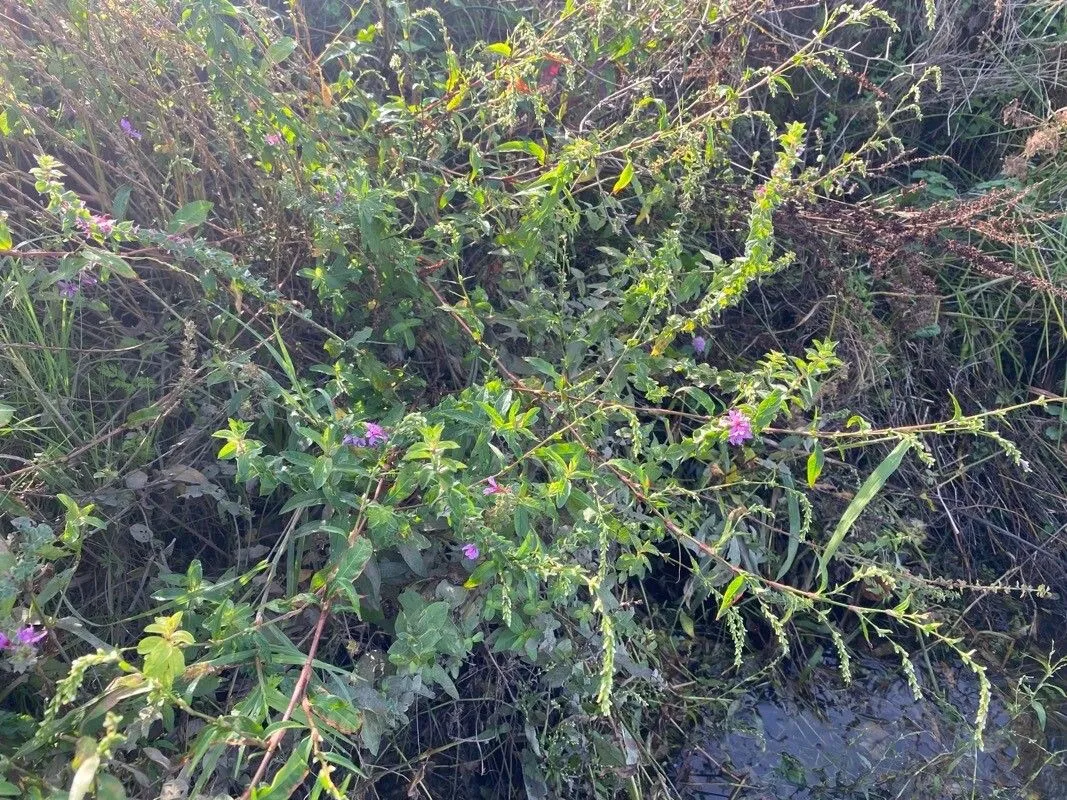
Author: L.
Bibliography: Sp. Pl.: 447 (1753)
Year: 1753
Status: accepted
Rank: species
Genus: Lythrum
Vegetable: False
Observations: EC. & SE. Europe to Siberia and N. China
Purple loosestrife, known scientifically as Lythrum virgatum, is a striking perennial herb that graces various landscapes with its vivid purple flowers. This species belongs to the Lythraceae family, a group renowned for its aesthetically pleasing and ecologically significant members.
Originally described by the eminent botanist Carl Linnaeus in his foundational work “Species Plantarum” in 1753, Lythrum virgatum has garnered attention for its expansive natural habitat. It is predominantly native to the regions of Eastern and Southeastern Europe and extends its reach across Siberia to Northern China. This wide geographical distribution underscores the plant’s adaptability to different climates and environments, ranging from temperate zones to the cooler expanses of Siberia and the diverse climates of Northern China.
Purple loosestrife is easily recognizable by its tall, angular stems that rise up to heights of 1-1.5 meters, crowned with dense spikes of magenta flowers that bloom from mid-summer to early autumn. Each flower cluster creates a lush, rich display, attracting scores of pollinators such as bees, butterflies, and other insects, which play a crucial role in the ecosystem.
The foliage of Lythrum virgatum adds to its ornamental appeal. The leaves are typically lance-shaped, smooth-edged, and arranged in pairs or whorls along the stem. During the growing season, these leaves maintain a vibrant green hue, contributing to the plant’s lush appearance.
Despite its beauty, it’s important to note that in some areas outside its native range, purple loosestrife has become an invasive species. Its robust growth habit allows it to outcompete local flora, potentially disrupting local ecosystems. This adaptive prowess, while admirable, necessitates careful management when introducing the plant into non-native environments.
In cultivation, Lythrum virgatum thrives in full sun and prefers wet, fertile soils, often flourishing in wetlands, along riverbanks, and in gardens designed to mimic such conditions. Its ability to thrive in moist soils makes it an attractive choice for gardeners looking to add color to damp, challenging areas where other plants may struggle to establish.
In conclusion, the purple loosestrife, Lythrum virgatum, is a botanical gem with impressive adaptability and visual appeal. While it thrives naturally across large swathes of Europe and Asia, gardeners and ecologists alike should be mindful of its potential invasive nature in non-native settings. Understanding and respecting its growth habits and ecological impact can ensure this striking plant continues to be enjoyed responsibly.
Eng: european wand loosestrife, purple loosestrife
Fra: lythrum effilé, salicaire à feuilles effilées
Deu: ruten-blutweiderich, ruten-weiderich
Dan: smalbladet kattehale
Swe: smalt fackelblomster
En: Purple loosestrife, European wand loosestrife, European Wand-loosestrife, Slender Loosestrife
Da: Smalbladet Kattehale
Fi: Etelänrantakukka
Fr: Lythrum effilé, Salicaire à feuilles effilées, Lythrum en forme de baguette
De: Ruten-Weiderich, Ruten-Blutweiderich
It: Salcerella minore
Sv: Smalt fackelblomster
Taken Jul 23, 2022 by iBushcrafter (cc-by-sa)
Taken Jul 25, 2020 by Marc van Gaalen (cc-by-sa)
Taken Jul 11, 2022 by Grauer Ralf (cc-by-sa)
Taken Aug 21, 2021 by first last (cc-by-sa)
Taken Nov 12, 2022 by sophie begin (cc-by-sa)
Taken Jun 10, 2022 by Jeanine Vialatte (cc-by-sa)
Taken Jun 27, 2021 by k.dimitrov d (cc-by-sa)
Taken Jul 5, 2022 by SheikYerbouti (cc-by-sa)
Taken Aug 21, 2021 by first last (cc-by-sa)
Taken Nov 12, 2022 by sophie begin (cc-by-sa)
Taken Jul 18, 2022 by taylor crampton (cc-by-sa)
Taken Aug 21, 2021 by first last (cc-by-sa)
Taken Sep 9, 2022 by Magan (cc-by-sa)
Taken Jun 10, 2022 by Jeanine Vialatte (cc-by-sa)
Taken Jul 13, 2022 by Barbora Vida (cc-by-sa)
Taken Aug 13, 2022 by Anatas (cc-by-sa)
Taken Nov 12, 2022 by yvon s (cc-by-sa)
Taken Nov 12, 2022 by yvon s (cc-by-sa)
Taken Aug 3, 2021 by Bertrand Ory (cc-by-sa)
Taken Nov 12, 2022 by yvon s (cc-by-sa)
Taken Aug 11, 2022 by kevin (cc-by-sa)
Taken Aug 28, 2022 by Florian Singer (cc-by-sa)
Taken Aug 24, 2022 by Christina P (cc-by-sa)
Taken Sep 17, 2022 by Andrea Tót (cc-by-sa)
Growth habit>: Subshrub, Forb/herb
Ph maximum: 7.0
Ph minimum: 6.5
Light: 8
Atmospheric humidity: 8
Soil nutriments: 5
Family: Myrtaceae Author: (F.Muell.) K.D.Hill & L.A.S.Johnson Bibliography: Telopea 6: 402 (1995) Year: 1995 Status:…
Family: Rubiaceae Author: Pierre ex A.Froehner Bibliography: Notizbl. Bot. Gart. Berlin-Dahlem 1: 237 (1897) Year:…
Family: Sapindaceae Author: Koidz. Bibliography: J. Coll. Sci. Imp. Univ. Tokyo 32(1): 38 (1911) Year:…
Family: Asteraceae Author: A.Gray Bibliography: Pacif. Railr. Rep.: 107 (1857) Year: 1857 Status: accepted Rank:…
Family: Fabaceae Author: Medik. Bibliography: Vorles. Churpfälz. Phys.-Ökon. Ges. 2: 398 (1787) Year: 1787 Status:…
Family: Aspleniaceae Author: (Cav.) Alston Bibliography: Bull. Misc. Inform. Kew 1932: 309 (1932) Year: 1932…